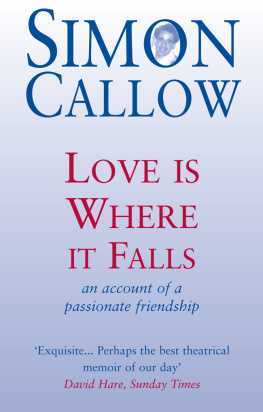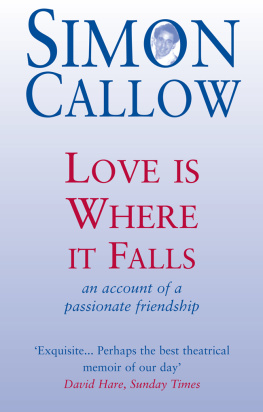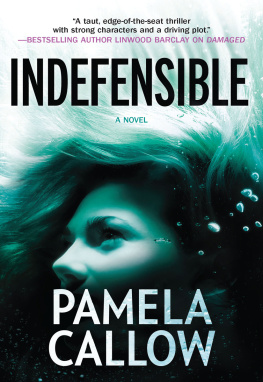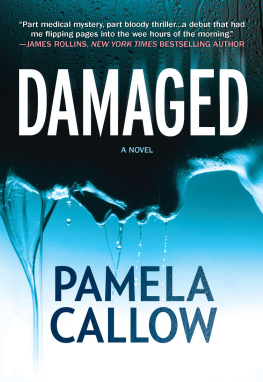Acknowledgements
A wise old owl at the University of Bristol once told me that some books were, by their very nature, happy ones. He did not mean that they necessarily came together more easily or quickly than others, but that the journey taken by the author in writing them was fortuitous in terms of the events, experiences and the new friends made along the way. By such standards, The Last Witches has been, and I hope will remain, a happy book.
Though any mistakes or oversights contained within these pages remain very much the preserve and the responsibility of the author, my thanks are due to a large number of institutions and individuals who have given generously of their help and expertise. In spite of the swinging cuts of the last decade, the local records offices and network of county archives remain treasure houses of peoples history: and my own especial thanks, in this regard, go to the staff at the Devon Heritage Centre, in Exeter, and the North Devon Records Office, in Barnstaple Public Library. Alison Mills at Barnstaple Museum and Julian Vayne at the Burton Art Gallery and Museum, Bideford, were unfailingly helpful in sourcing images and opening up new avenues of information. Likewise, Simon Costin and Fergus Moffat at the Museum of Witchcraft, Boscastle, combine a passion for and unfailing interest in their subject, with a mission to preserve and extend their world-class collections.
In Bideford itself, Harry and Sue Juniper provided in the form of their magnificent studio on the Ropework a tangible link with the master potters of the seventeenth century and were unfailingly helpful with my questions, as were Gill Clayton (as the proud owner of one of Harry Junipers splendid pots) and Peter Christie, who combines true generosity of spirit with an encyclopaedic knowledge of the towns history and development. Lorna Dorrington very kindly took the time and trouble to open up the parish church on a Saturday morning, while Chris Fulford and Judy Bliss, of the Andrew Dole Charity, maintain another extremely important source of continuity with the past and were, in the present, incredibly generous in supplying copies of the materials relating to the operation of poor relief in Bideford.
Though approaching the subject from subtly different angles, Judith Noble, Jackie Juno, and Ben Bradshaw MP were kind enough to share their time, thoughts and expertise in discussing the manner in which three women of Bideford have been commemorated and posthumously recreated over recent years. Likewise, Jim Bachelier-Moore was able to revisit his photographs of the witches gatherings at Rougemont Gardens, at short notice, and showed great generosity of spirit in making them available to me. Anna Milon took time out from her own researches to seek out a source for me in the Library of the University of Exeter, while Prof. Mark Stoyle, of the University of Southampton, shared his expertise regarding the siting of the Exeter gallows and the execution of the witches.
Books do not, of course, simply happen by themselves and my thanks go out to Emily Drewe, my editor at Bloomsbury, and to Abigail Lane, Editorial Assistant at Bloomsbury, for their help and professional insight in readying The Last Witches for publication. My thanks are also due to Jo Godfrey, who was part of the original editorial team, and to Alex Wright, a great friend and support who thought that a tale of West Country witches and rebellion, combining sea-salt, saltpetre, and sulphur, might appeal to a new readership.
On a personal level, we are nothing without our friends and, therefore, I am truly fortunate in having friendships measured in years and counted in constancy with Christina Harrington, Louise Carter, Sean OBrogain, and Harvey Osborne. To Fred Valetta I owe a debt of thanks for an important set of references and for kindly words, that were much appreciated, on the field by Cropredy Bridge. To Phil and Freddy le Pinnet companions to myself and Kit on so many of our adventures lets hope that there are many more in store for us all. Bev and Del Richardson offered the hospitality of their hearth and home, and a vision of what our isle once was and might yet be.
Lastly, this book is for Angus MacLeod (192096): a Manxman not by birth but by love and volition, not least because he would have understood the reasons behind it: and in the hopes that his shade and that of Ivan, his faithful Labrador, may yet be found chasing the breakers out on the rocks at Scarlett Point.
John Callow, Candlemas 2021
A Note on Dating and Terminology
Although many European nations had adopted the Gregorian Calendar over the course of the seventeenth century, the British and Irish remained stubbornly loyal to the Julian Calendar until 1752. The result was that their calendars lagged some ten days behind that which was generally used on the Continent. By 1700, this difference had further increased to eleven days.
The dating given in this work reflects that of the Julian (Old Style) Calendar acknowledged by the people of Bideford in the 1670s80s, but with two exceptions. For events that took place after the changeover of 1752, the Gregorian (New Style) Calendar is used, while for the sake of clarity the new year is taken as beginning on 1 January and not on 25 March, as had been the case under the old Julian system.
Prologue: The magpie at the window
On the morning of Thursday 29 June 1682, a magpie came rasping, rapping and tapping at the window of the house of Thomas Eastchurch. The busy quayside, well-stocked shops, and the patchwork of walled gardens and little orchards that backed onto many of the major properties in Bideford usually offered rich pickings for scavengers with a quick beak, a sharp eye and a fast wing. Yet that morning was different.
It was not food that had brought the bird to the family home above their shop. Rather, it was something that lay within the upstairs chamber: something bright, something that sparkled, catching and reflecting the bright summer sun through the glass panes. It was this which had grabbed hold of the magpies attention, emboldened his spirit and caused him to explore the open window. Fluttering up from the street, he perched on the sill before pushing his head through the opening, intent on securing the wonderful prize that lay within. Like the poor who gleaned the spilled tobacco and foodstuffs from the jetties and alleyways, scavenging was a way of life for the bird, a means to continued existence. However, on this occasion, the choice to abandon necessity in favour of single-minded greed almost became his undoing and threatened to make his latest raid his last. So bright was the prize that the magpie had not stopped to check whether he was being observed, upon his entry, or if the chamber was still occupied. As a result, the presence of humans, the sudden burst of noise and movement, and the swirl of the sheets that threatened to engulf and ensnare him came as a complete surprise.














